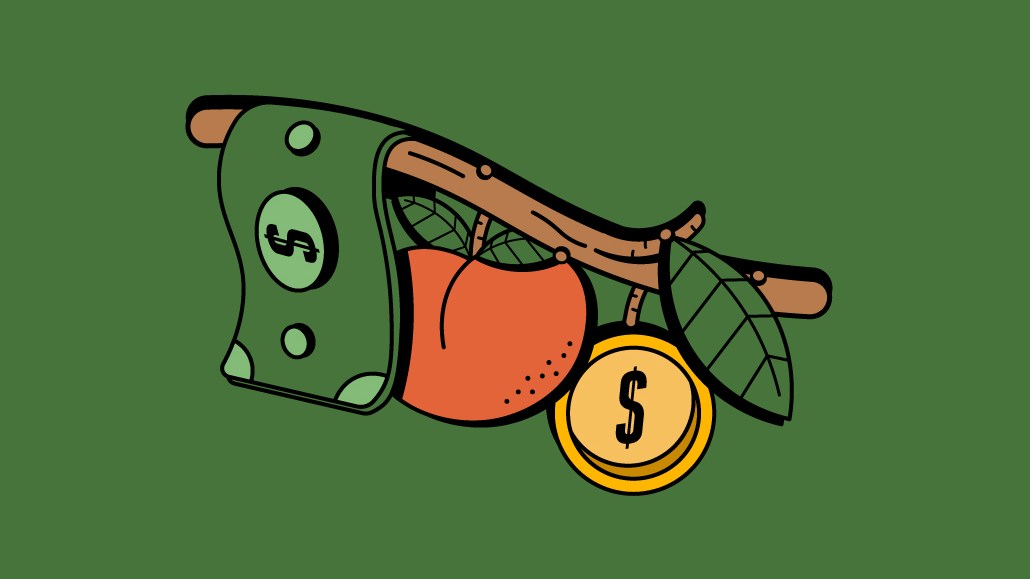Save 50% on a 3-month Digiday+ membership. Ends Dec 5.
Why KFC worked with Google to create a marketing strategy for its app

Food brand KFC developed a new marketing strategy for its app, after taking advice from an outsized source: Google.
The new strategy for the app went into effect in 2020 after Google shared data insights to guide the brand.
The effort to rethink the app, which was originally released in 2021, follows a shift in marketing leadership at KFC as the chain tries to make its products more accessible to customers. The two companies have been working together since 2020, however, Google and KFC each declined to disclose their financial arrangement for this partnership.
“The goal is to continue providing a better experience over time so that customers can enjoy KFC,” said Jeff Long, director of customer journey marketing. The brand aims to showcase how it wants to make customers’ lives better, a message that the brand has incorporated in its app advertising as well as on television, including in its famous bucket ad.
With the KFC app, customers can re-order their previous orders, making it easier for them to save time. These features were created in light of data analyzed by Google, though this new strategy doesn’t move KFC’s perspective on privacy. “We’re always looking at ways to make our guest experience more relevant and personalized, and capturing and growing our first-party data is one way we deliver that enhanced customer experience,” Long said.
“Given that so much of the consumer journey is now happening digitally, it’s offered us a unique opportunity to really partner with brands like KFC in new ways and help them through these pivots and really needs to meet the changing consumer demand,” said Megan Danielson, Google’s head of industry, restaurants. Danielson noted that there has been a YoY increase of 400% from 2020 to 2021 for “takeout restaurants” searches, though she did not provide exact growth figures.
It’s no secret that people have increasingly turned to online video and cable television for entertainment, so platforms such as YouTube, Instagram, and TikTok can be a powerful tool for reaching — both existing and new — audiences. The recent campaign of KFC starring Jack Harlow tapped into the popularity of those social platforms.
As part of a social media strategy, KFC leveraged the social media platforms in an organic way to capture the attention of the millennial and Gen Z demographics for the Jack Harlow campaign. “We were figuring out how we can leverage the strengths and weaknesses of each platform to deliver a holistic kind of campaign approach that makes customers understand what the offering has for them and why they should care about KFC and this Jack Harlow meal,” said Long.
It is unclear how much of its advertising budget is allocated to the KFC app as Long would not share overall budget specifics. Long noted KFC used Facebook for organic growth and that the ad spend was split between TikTok, Pinterest, Twitter, and Instagram. According to Kantar data, KFC spent close to $47 million in 2022 on marketing efforts.
There was an increase in restaurant app downloads due to the pandemic, as restaurant owners tried to differentiate themselves among consumers and drive loyalty in an age where cookies are no longer an issue. “Combined with a pandemic-fueled increase in online ordering for fast food, it’s smart to invest in sending traffic toward the chain’s mobile app,” said Margo Kahnrose, CMO at Skai, an omnichannel marketing platform, adding that with authenticated relationships with consumers, KFC is able to tailor and serve its relationships based on rich, first-party data. Statistical data shows that more than half of restaurant customers used their apps on a daily basis, compared to third-party apps, in the last fall.
In recent years, it has become apparent that the digital market is becoming increasingly comfortable with the idea of personalized brand experiences thanks to the growth of apps, such as the fact that top brands like KFC are looking to invest in their most loyal customers and be prepared for what’s next as consumers’ habits continue to evolve over time. “Brands who see the most success will utilize all premier resources available to them to craft data-backed solutions that aim to drive results and growth versus relying solely on headlines,” said David Anderson, partner, UTA and co-head of entertainment and culture marketing at the strategic advisory firm MediaLink.
More in Marketing

Ulta, Best Buy and Adidas dominate AI holiday shopping mentions
The brands that are seeing the biggest boost from this shift in consumer behavior are some of the biggest retailers.

U.K. retailer Boots leads brand efforts to invest in ad creative’s data layer
For media dollars to make an impact, brands need ad creative that actually hits. More CMOs are investing in pre- and post-flight measurement.

‘AI is permeating everything we do’: How Guitar Center developed 2 AI tools this year
This summer, the company launched a chatbot called Rig Advisor to help customers find the right instruments and products.
Ad position: web_bfu




